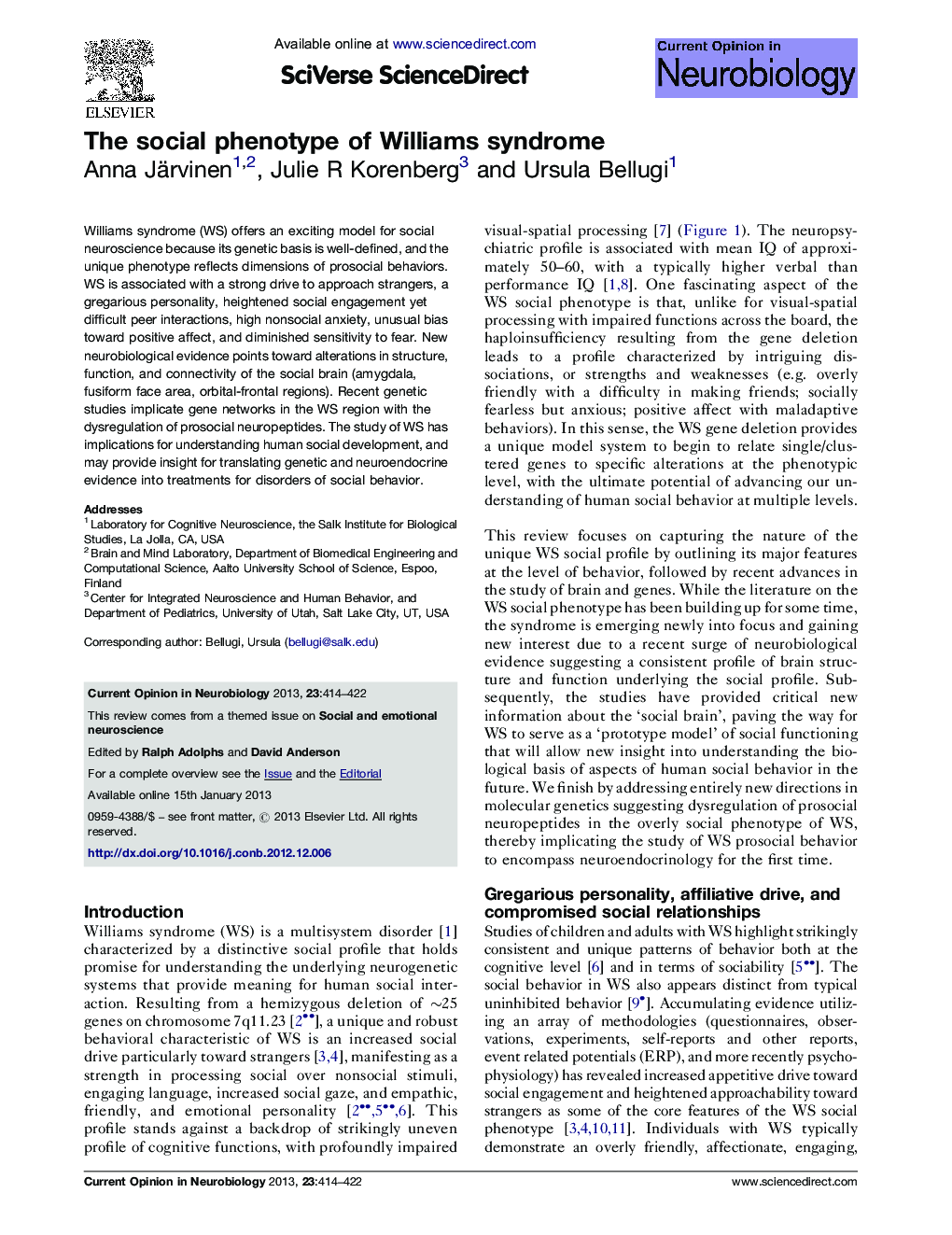| Article ID | Journal | Published Year | Pages | File Type |
|---|---|---|---|---|
| 6267184 | Current Opinion in Neurobiology | 2013 | 9 Pages |
Williams syndrome (WS) offers an exciting model for social neuroscience because its genetic basis is well-defined, and the unique phenotype reflects dimensions of prosocial behaviors. WS is associated with a strong drive to approach strangers, a gregarious personality, heightened social engagement yet difficult peer interactions, high nonsocial anxiety, unusual bias toward positive affect, and diminished sensitivity to fear. New neurobiological evidence points toward alterations in structure, function, and connectivity of the social brain (amygdala, fusiform face area, orbital-frontal regions). Recent genetic studies implicate gene networks in the WS region with the dysregulation of prosocial neuropeptides. The study of WS has implications for understanding human social development, and may provide insight for translating genetic and neuroendocrine evidence into treatments for disorders of social behavior.
⺠WS serves as an excellent model for linking genes, neural systems and social phenotype. ⺠The key dimensions of WS sociability include increased approachability, attention to faces, and emotional responsivity. ⺠Hypersociability combines with altered structure and function of the social brain in WS. ⺠Genes at 7q11.23 are implicated in social-affective functions. ⺠The WS gene deletion is linked to dysregulation of prosocial neuropeptides oxytocin (OT) and arginine vasopressin (AVP).
